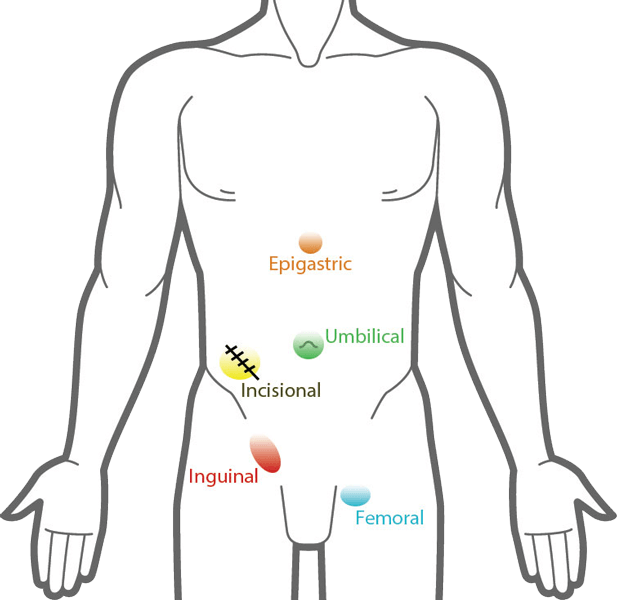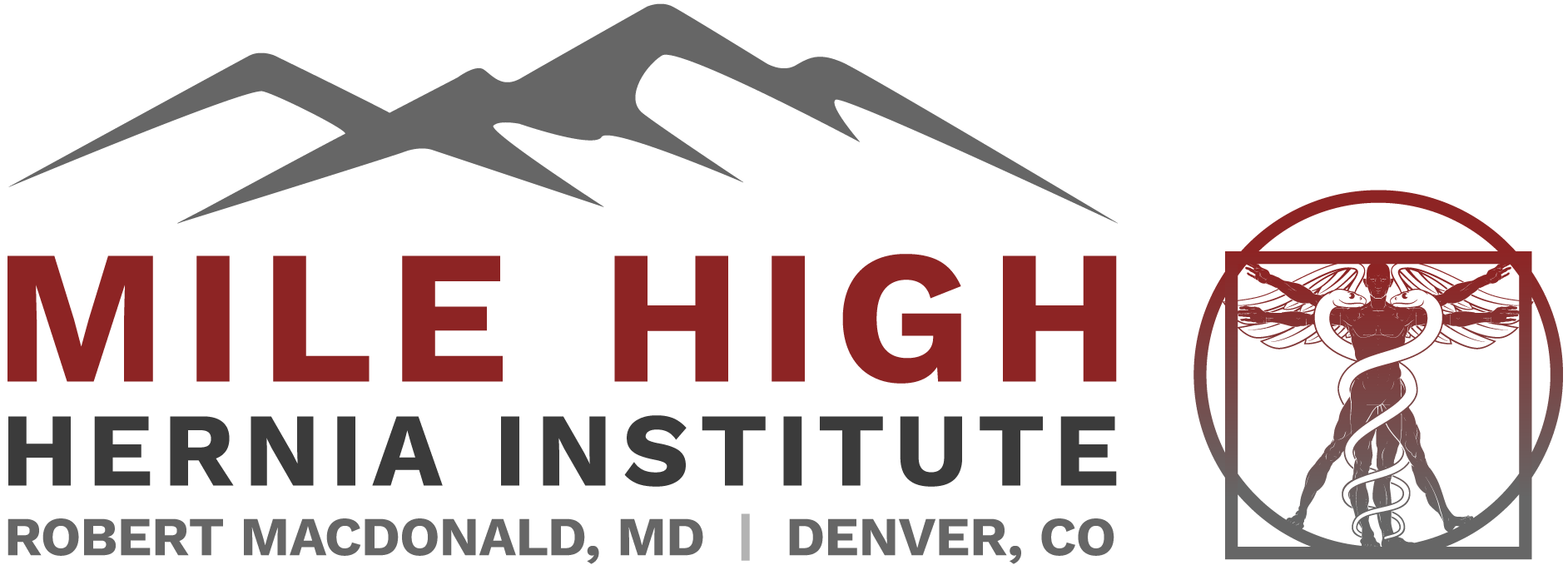Hernias-General Info
What Is a Hernia?
A hernia is a hole in the muscle of the abdominal wall. The hole allows structures behind the muscle to push through the hole, often causing a bulge that can be seen or felt on the skin. Hernias occur in a limited number of very predictable locations. They are often found along the midline of the abdominal wall between the umbilicus(belly button) and sternum(breast bone). These hernias are called umbilical or epigastric hernias. Hernias found in the groin area just above the pubic bone are called inguinal hernias. Hernias may also occur anywhere within the abdominal wall muscle where a previous operation was performed. This type of hernia is called an incisional hernia. Sports hernias are a slightly different entity, also found in the groin region, and are discussed separately.

Hernia Symptoms
Often hernias cause no symptoms. When they do, patients often notice pain or a bulge, mass, or swelling in the areas described. The pain or swelling may be present during activities such as exercise, lifting, pushing, or pulling. Symptoms may be more common when the patient has been standing much of the day, and are usually relieved when lying down. The swelling frequently comes and goes, and sometimes the patient can push on the area and it temporarily disappears. Pain or swelling occurs when structures behind the muscle squeeze through the hole in the muscle. Such structures are often just fatty tissue, but may also include the intestine. If the structure gets stuck, the hernia is said to be “incarcerated”, or trapped.
Hernia Surgery
Hernias don’t always require repair. If a hernia is small and not painful, and the appearance is not unsatisfactory to the patient, the hernia may be observed. Most hernias do get bigger with time and careful observation for symptoms is important. Hernias that are painful or getting larger should be repaired.
Hernia surgery remains a rapidly evolving specialty of Surgery. Until approximately 40 years ago, the only way to repair a hole in the abdominal wall muscle was to sew it back together with surgical sutures. Because hernias are a product of weakened muscle fibers, to begin with, this type of repair amounted to sewing weak muscle to weak muscle, often under significant tension. Recurrence was common, and the muscle became even more damaged where the sutures pulled through.
It was not uncommon for a patient to need repeat hernia surgery every few years.
Modern hernia surgery essentially involves reconstructing the abdominal wall with a specialized type of material called mesh. The hole in the muscle is usually left alone so that further muscle damage does not occur, and the patch is placed far away from the edges of the hole where stronger muscle exists, essentially creating a tension-free patch-repair. Recurrence rates with mesh are significantly lower than those without, depending on the type of hernia and the patient’s condition. The risk of a complication with mesh repair is less than 1/100, the most common being infection. When this happens, the mesh may need to be removed.
